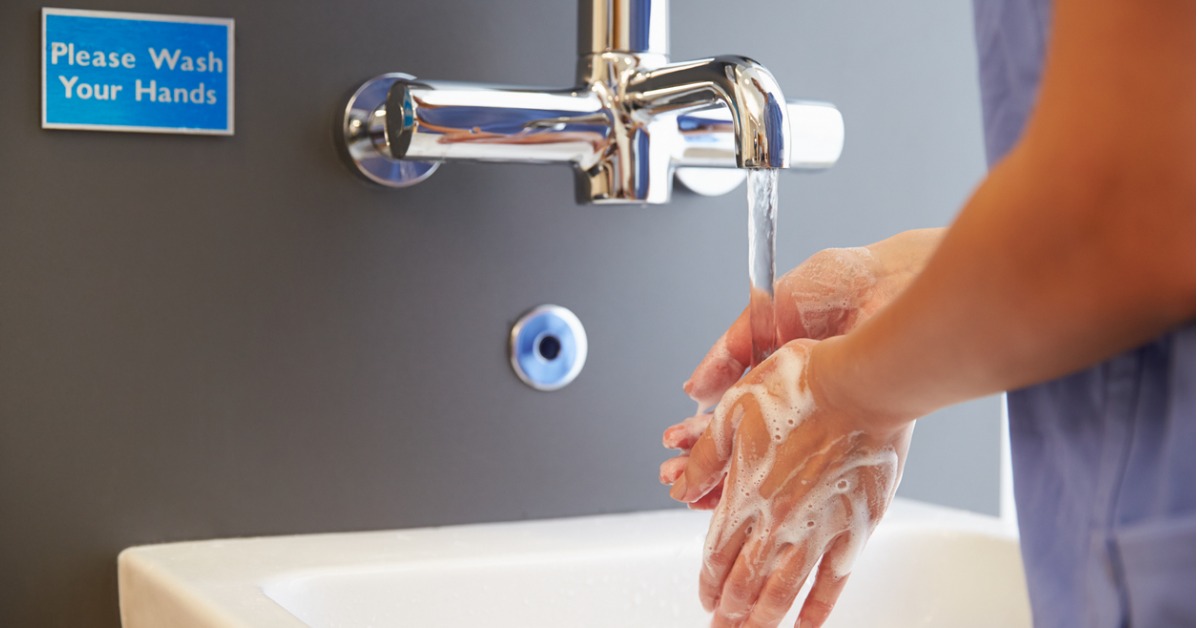
With increased awareness of hospital acquired infections in recent years, there has been a greater focus on preventing biofilm forming in health care settings. With some of the biofilm-related infections resistant to antibacterial treatment including antibiotics, biofilm is a significant threat to patient health.
What is Biofilm?
Biofilm is a collection of microorganisms such as bacteria that come in contact with a surface and stick to it. This first step of attachment occurs when the microorganisms produce a gooey substance known as an extracellular polymeric substance (EPS). An EPS is a network of sugars, proteins and nucleic acids that enable the microorganisms in a biofilm to stick together. The second step is the formation of a microcolony, followed by the maturation of the biofilm as the third step. The final step is the detachment of the bacteria where it can inflict its damage.
Biofilm in Healthcare Facilities
Biofilm is more dangerous in health care settings than in other parts of the community, because you have a large number of sick and immuno-compromised people in one area who can’t fight off hospital acquired infections (HAI).
The following wards most frequently record outbreaks of HAIs that start in sink biofilm. These patients are usually the most critically ill or have highly compromised immune systems.
It’s estimated that 65% of all HAIs involve water. It’s not just biofilm found in drains, even surgical equipment and hospital devices have been found to cause HAIs. A wide range of devices have been found to cause one or more outbreaks in hospitals, including heater-cooler units, hemodialysis equipment, neonatal incubators, dental unit waterlines, fluid warmers, nebulizers, water traps, water baths, blanketrol, scalp cooling, and thermic stimulator.
Design of Hospital Sinks
While hospital sinks play an important role in hand hygiene and reducing the spread of bacteria and viruses, these sinks are also rich microbial breeding grounds and reservoirs for the transmission of nosocomial pathogens and resistance genes.
Sink Design Contributes to HAIs
The design of sinks can promote the spread of pathogens through the establishment of a biofilm. The biofilm could then be disrupted, resulting in aerosolization, splashing, or contamination of surrounding surfaces.
Sink biofilm formation is often encouraged by some design features which lead to high microbial burden including the use of plastic traps; taps with aerators or other flow modulators, rimmed tap spouts, sink rubbers and overflow holes.
The contamination occurs most often when a hospital worker washes their hands, and cells from the biofilm detach and land on the healthcare worker’s hands or nearby medical devices, supplies or medications.
Shallow basins can cause cross contamination of hands and water splashing onto the tap, sink collar and surrounding surfaces. The position of the tap can also impact risk levels. The biofilm is more likely to be disrupted and pathogens dispersed if the water flows directly into the drain. Health care workers can also increase the risks by disposing of patient wastewater down the hand hygiene sinks, which encourages biofilm growth and antibiotic resistance. Placing patient care items such as medications too close to the sink has also been found to be the cause of transmission during investigations into outbreaks.
Waterborne bacteria such as P. aeruginosa are common in sink-related outbreaks. P.aeruginosa is dangerous because it is multi-drug resistant (MDR). Carbapenemases is commonly identified in outbreaks and is also an MDR.
The full extent of sink-related infections may never be known, as most hospitals don’t routinely test sinks for biofilm.
How Can Biofilm Be Prevented in Health Care Settings?
Pathogens from a water reservoir can be transmitted through ingestion, aspiration of contaminated water, and inhalation of aerosols. It’s not possible to keep water reservoirs clean and free of biofilm through standard cleaning. The only way to ensure dangerous pathogens don’t infect patients and the surfaces in their bathroom and room is to use mechanical devices.
GreenDrain™
Green Drain™ is a waterless trap seal for floor drains which allow water and debris to pass through but stops infection-causing pathogens, noxious fumes and pests from entering a room from the drain. The patented silicone skirt technology is retrofitted to existing drains and comes in several sizes to fit the most common drain sizes. The deadly pathogens and microorganisms that can breed in drains are sealed off.
The clinical version of Green Drain™ has been fitted in a number of hospitals and healthcare facilities to protect patients against nosocomial infections and to stop odour and bacteria.
For more information about Green Drain™, call 1300 29 32 32 or contact us online.